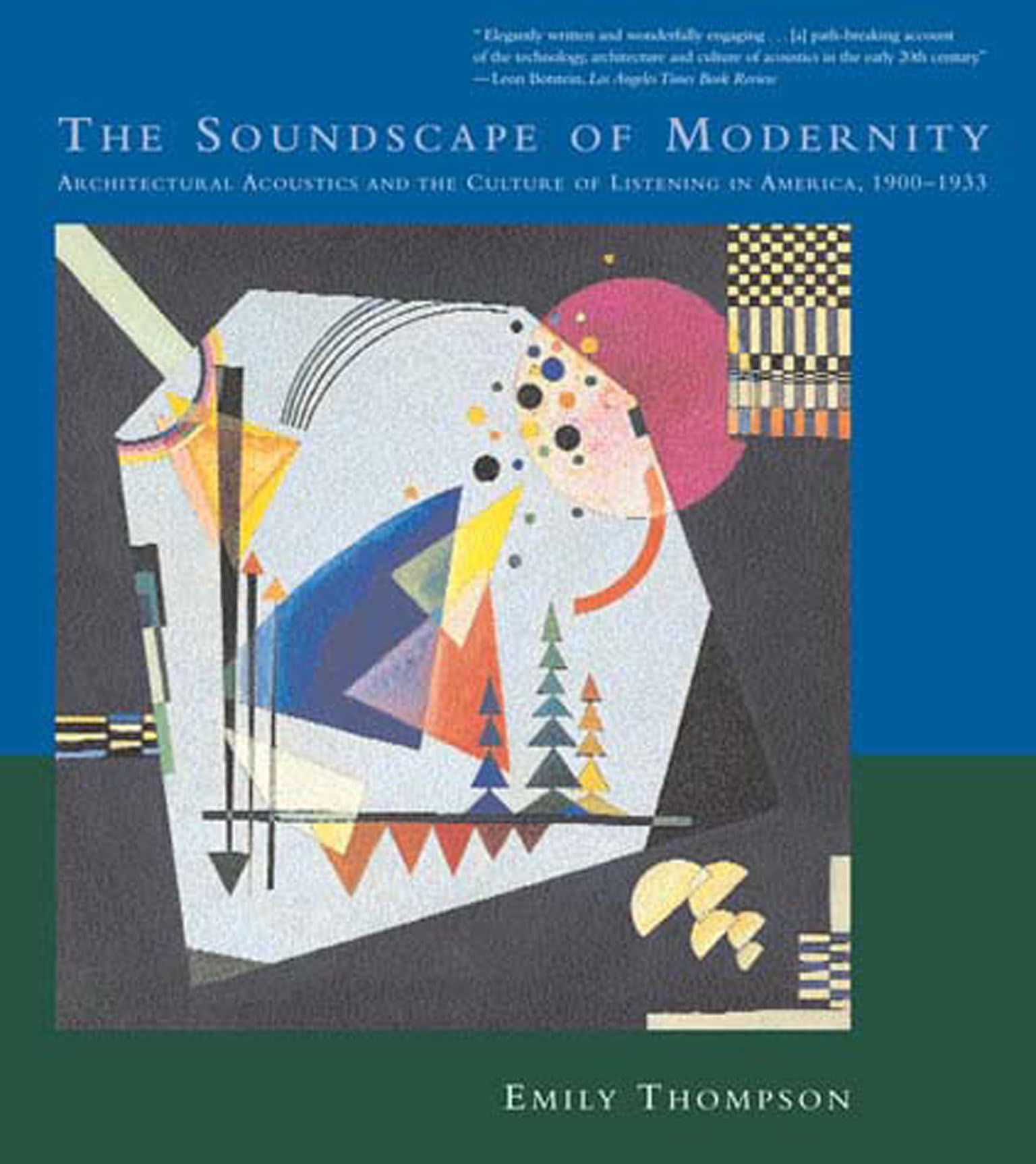
Title

The Soundscape Of Modernity: Architectural Acoustics And The Culture Of Listening In America, 19001933
Delivery time: 8-12 business days (International)
A Vibrant History Of Acoustical Technology And Aural Culture In Earlytwentiethcentury America.In This History Of Aural Culture In Earlytwentiethcentury America, Emily Thompson Charts Dramatic Transformations In What People Heard And How They Listened. What They Heard Was A New Kind Of Sound That Was The Product Of Modern Technology. They Listened As Newly Critical Consumers Of Aural Commodities. By Examining The Technologies That Produced This Sound, As Well As The Culture That Enthusiastically Consumed It, Thompson Recovers A Lost Dimension Of The Machine Age And Deepens Our Understanding Of The Experience Of Change That Characterized The Era.Reverberation Equations, Sound Meters, Microphones, And Acoustical Tiles Were Deployed In Places As Varied As Boston'S Symphony Hall, New York'S Office Skyscrapers, And The Soundstages Of Hollywood. The Control Provided By These Technologies, However, Was Applied In Ways That Denied The Particularity Of Place, And The Diverse Spaces Of Modern America Began To Sound Alike As A Universal New Sound Predominated. Although This Soundclear, Direct, Efficient, And Nonreverberanthad Little To Say About The Physical Spaces In Which It Was Produced, It Speaks Volumes About The Culture That Created It. By Listening To It, Thompson Constructs A Compelling New Account Of The Experience Of Modernity In America.
By changing our most important processes and
products, we have already made a big leap forward. This ranges from the
increased use of more sustainable fibers to the use of more
environmentally friendly printing processes to the development of
efficient waste management in our value chain.
⚠️ WARNING (California Proposition 65):
This product may contain chemicals known to the State of California to cause cancer, birth defects, or other reproductive harm.
For more information, please visit www.P65Warnings.ca.gov.
Shipping & Returns
Shipping
We ship your order within 2–3 business days for USA deliveries and 5–8 business days for international shipments. Once your package has been dispatched from our warehouse, you'll receive an email confirmation with a tracking number, allowing you to track the status of your delivery.
Returns
To facilitate a smooth return process, a Return Authorization (RA) Number is required for all returns. Returns without a valid RA number will be declined and may incur additional fees. You can request an RA number within 15 days of the original delivery date. For more details, please refer to our Return & Refund Policy page.
Shipping & Returns
Shipping
We ship your order within 2–3 business days for USA deliveries and 5–8 business days for international shipments. Once your package has been dispatched from our warehouse, you'll receive an email confirmation with a tracking number, allowing you to track the status of your delivery.
Returns
To facilitate a smooth return process, a Return Authorization (RA) Number is required for all returns. Returns without a valid RA number will be declined and may incur additional fees. You can request an RA number within 15 days of the original delivery date. For more details, please refer to our Return & Refund Policy page.
Warranty
We provide a 2-year limited warranty, from the date of purchase for all our products.
If you believe you have received a defective product, or are experiencing any problems with your product, please contact us.
This warranty strictly does not cover damages that arose from negligence, misuse, wear and tear, or not in accordance with product instructions (dropping the product, etc.).
Warranty
We provide a 2-year limited warranty, from the date of purchase for all our products.
If you believe you have received a defective product, or are experiencing any problems with your product, please contact us.
This warranty strictly does not cover damages that arose from negligence, misuse, wear and tear, or not in accordance with product instructions (dropping the product, etc.).
Secure Payment
Your payment information is processed securely. We do not store credit card details nor have access to your credit card information.
We accept payments with :
Visa, MasterCard, American Express, Paypal, Shopify Payments, Shop Pay and more.
Secure Payment
Your payment information is processed securely. We do not store credit card details nor have access to your credit card information.
We accept payments with :
Visa, MasterCard, American Express, Paypal, Shopify Payments, Shop Pay and more.
Related Products
You may also like
Frequently Asked Questions
- Q: What is 'The Soundscape of Modernity' about? A: 'The Soundscape of Modernity' explores the history of acoustical technology and aural culture in early-twentieth-century America, detailing how modern technology changed what people heard and how they listened.
- Q: Who is the author of this book? A: The author of 'The Soundscape of Modernity' is Emily Thompson.
- Q: When was 'The Soundscape of Modernity' published? A: 'The Soundscape of Modernity' was published on September 17, 2004.
- Q: What is the page count of 'The Soundscape of Modernity'? A: 'The Soundscape of Modernity' has a total of 510 pages.
- Q: What type of binding does this book have? A: 'The Soundscape of Modernity' is available in a paperback binding.
- Q: What condition is the book in? A: The book is in 'New' condition.
- Q: What topics does 'The Soundscape of Modernity' cover? A: The book covers topics such as acoustical technology, aural culture, and the impact of sound in modern American society between 1900 and 1933.
- Q: Is there any specific technology discussed in the book? A: Yes, the book discusses various technologies like reverberation equations, sound meters, microphones, and acoustical tiles.
- Q: What cultural aspects does the book explore? A: The book examines how the culture of listening evolved and how people became critical consumers of aural commodities during the Machine Age.
- Q: Who would benefit from reading this book? A: Readers interested in architectural acoustics, history, American culture, and technology will find this book particularly insightful.
